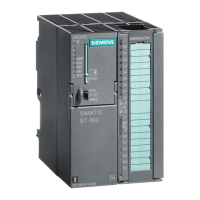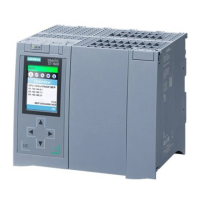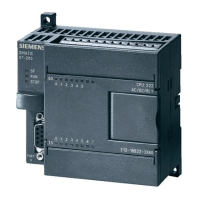&RPPLVVLRQLQJ
S7-300 Automation System, Hardware and Installation: CPU 312IFM - 318-2 DP
A5E00203919-01
9-21
6SHFLDOIHDWXUHV
• If "Trigger condition for monitoring" is set to RQFH, the menu items 9DULDEOH!
8SGDWHVWDWXVYDOXHor9DULDEOH!0RQLWRU have the same effect, namely a
single update.
• If "Trigger condition for controlling" is set to RQFH, the menu items 9DULDEOH!
8SGDWHFRQWUROYDOXHor9DULDEOH!&RQWURO have the same effect, namely a
one-time assignment.
• If trigger conditions are set toSHUPDQHQW, the said menu items have different
effects as described above.
• If monitoring and controlling is set to the same trigger point, monitoring is
executed first.
• With some CPU versions (e.g. CPU 314-1AE03) values are not assigned at
every cycle when SHUPDQHQWFRQWUROis set.
Remedy: Use the testing function)RUFH.
6DYLQJ2SHQLQJWKH9DULDEOH7DEOH
6DYLQJWKH9$7
1. After you abort or complete a test phase, you can save the variable table to
memory. The name of a variable table starts with the letters VAT, followed by a
number from 0 to 65535; e.g. VAT5.
2SHQLQJWKH9$7
1. Select the menu item 7DEOH!2SHQ.
2. Select the project name in the2SHQdialog.
3. In the project window below, select the relevant program and mark the %ORFNV
container.
4. In the block window, select the desired table.
5. Confirm with2..
(VWDEOLVKLQJDFRQQHFWLRQWRWKH&38
The variables of a VAT represent variable quantities of a user program. In order to
monitor or control variables it is required to establish a connection to the relevant
CPU. Every variable tables can be linked to another CPU.
In menu item 3/&!&RQQHFWWR, establish a connection to one of the following
CPUs:
• configured CPU
• directly connected CPU
• available CPU ...

